
Isaac Peckham Christiancy was chief justice of the Michigan State Supreme Court and U.S. Senator from the state of Michigan.
Claude Ernest Cady was a politician and businessman from the U.S. state of Michigan.

Andrew Philip Kehoe was an American mass murderer. Kehoe was a Michigan farmer who became disgruntled after losing reelection as treasurer of the Bath Township school board. He murdered his wife and then detonated bombs at the Bath Consolidated School on May 18, 1927, resulting in the Bath School disaster in which 45 people were killed and 58 more people were injured. Kehoe killed himself near the school by detonating dynamite in his truck, killing himself and several other people and wounding more. He had earlier set off incendiary devices in his house and around his farm, destroying all the buildings. The event remains the deadliest act of mass murder at an American school.

The Albany Rural Cemetery was established October 7, 1844, in Menands, New York, United States, just outside the city of Albany, New York. It is renowned as one of the most beautiful, pastoral cemeteries in the U.S., at over 400 acres (1.6 km2). Many historical American figures are buried there.
John Theodore Herrmann was a writer in the 1920s and 1930s and is alleged to have introduced Whittaker Chambers to Alger Hiss.
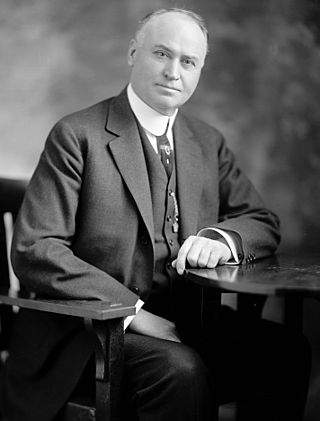
Patrick Henry Kelley was a politician from the U.S. state of Michigan. He served as U.S. Representative from Michigan's 6th congressional district from 1915 to 1923.

The Bath School disaster, also known as the Bath School massacre, was a series of violent attacks perpetrated by Andrew Kehoe upon the Bath Consolidated School in Bath Charter Township, Michigan, United States, on May 18, 1927. The attacks killed 38 children and 6 adults, and injured at least 58 other people. Prior to the explosions at the school, Kehoe had murdered his wife, Nellie Price Kehoe, and firebombed his farm. Arriving at the site of the school explosion, Kehoe died when he set off explosives concealed in his truck.
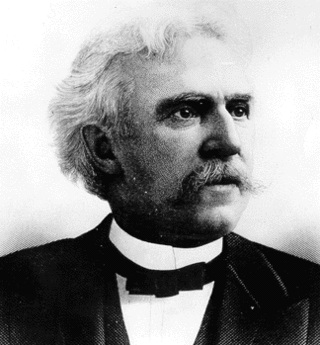
Elijah E. Myers was a leading architect of government buildings in the latter half of the 19th century, and the only architect to design the capitol buildings of three U.S. states, the Michigan State Capitol, the Texas State Capitol, and the Colorado State Capitol. He also designed buildings in Mexico and Brazil. Myers favored Victorian Gothic and Neo-Classical styles, but he worked in other styles as well.

Lansing Eastern High School is a public, magnet high school in Lansing, Michigan as part of the Lansing School District. Eastern International Baccalaureate Magnet High School is the only high school in mid-Michigan authorized to offer students the opportunity to earn an International Baccalaureate Diploma. Eastern also has the second-largest alumni association in the United States. It was located on the city's east-side on Pennsylvania Avenue, one block north of Michigan Avenue but is now located on Marshall Street on the corner of Marshall Street and Saginaw Street. The building was connected with former Pattengill Middle School next to Sparrow Hospital. In 2007, Sparrow purchased the Pattengill property to create a parking lot. With the deconstruction of Pattengill Middle School, Lansing Eastern became the oldest operational school in the Lansing School District. It opened in 1928 as the second high school in the city. The athletic teams were named Quakers because the school was located on Pennsylvania Avenue and a Society of Friends (Quaker) meeting house was located across the street. In March 2012 the Lansing School District announced that Eastern would house 7-12 grades beginning in the 2012–2013 school year. On January 20, 2016, the Lansing School Board voted to sell the school to the Edward Sparrow Hospital Association for approximately $2.5 million. Students were relocated to the former Pattengill Middle School in Fall 2019.

William James Beal was an American botanist. He was a pioneer in the development of hybrid corn and the founder of the W. J. Beal Botanical Garden.

Byron Mac Cutcheon was an American Civil War officer, Medal of Honor recipient and politician from the U.S. state of Michigan.
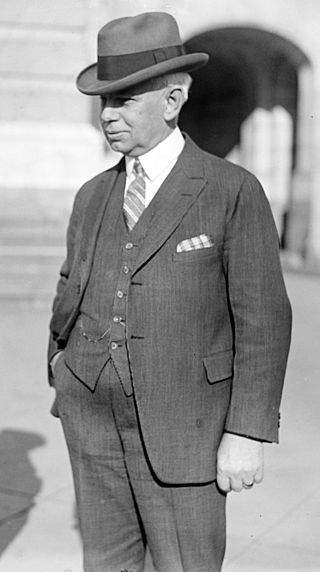
Grant Martin Hudson was a politician from the U.S. state of Michigan.

John Dougherty Defrees (1810–1882) was an American newspaperman and politician.
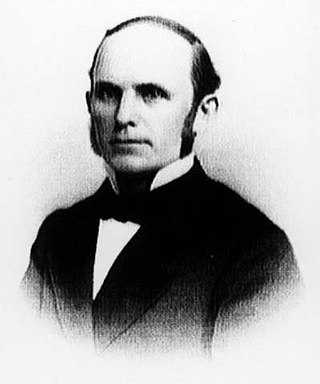
George E. Ranney was an American assistant surgeon who received the Medal of Honor for valor for his service with the Union Army during the American Civil War.
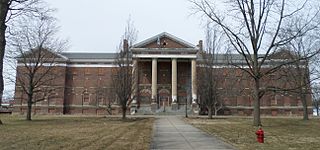
The Michigan School for the Blind (MSB) was a state-operated school for blind children in Michigan.
Angela Kaye Witwer is an American politician and a Democratic member of the Michigan House of Representatives, serving the 76th House District.

L. Anna Ballard was an American physician. After graduating from medical school, Ballard became Lansing, Michigan's first female medical physician. She also worked to change the age of consent from 10 to 14 years in Michigan. In 2012, she was inducted into the Michigan Women's Hall of Fame.
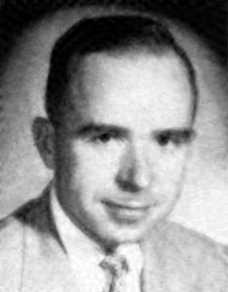
Willard I. Bowerman Jr. was a Michigan politician.

Saint Mary Church of Lansing was the first Catholic church built in Lansing, Michigan, as well as having the distinction of the first brick church edifice, brick parsonage and church bells in the city. It was part of the Roman Catholic Archdiocese of Detroit. The church was dedicated in 1866 and served the parish until 1904. It was demolished in 1905 and eventually replaced by the Cathedral of the Immaculate Conception in 1913.

Henry Romaine Pattengill was an American educator and politician. He was the Michigan Superintendent of Public Instruction from 1893 to 1896, elected as a Republican, and was the Progressive nominee in the 1914 Michigan gubernatorial election.

















